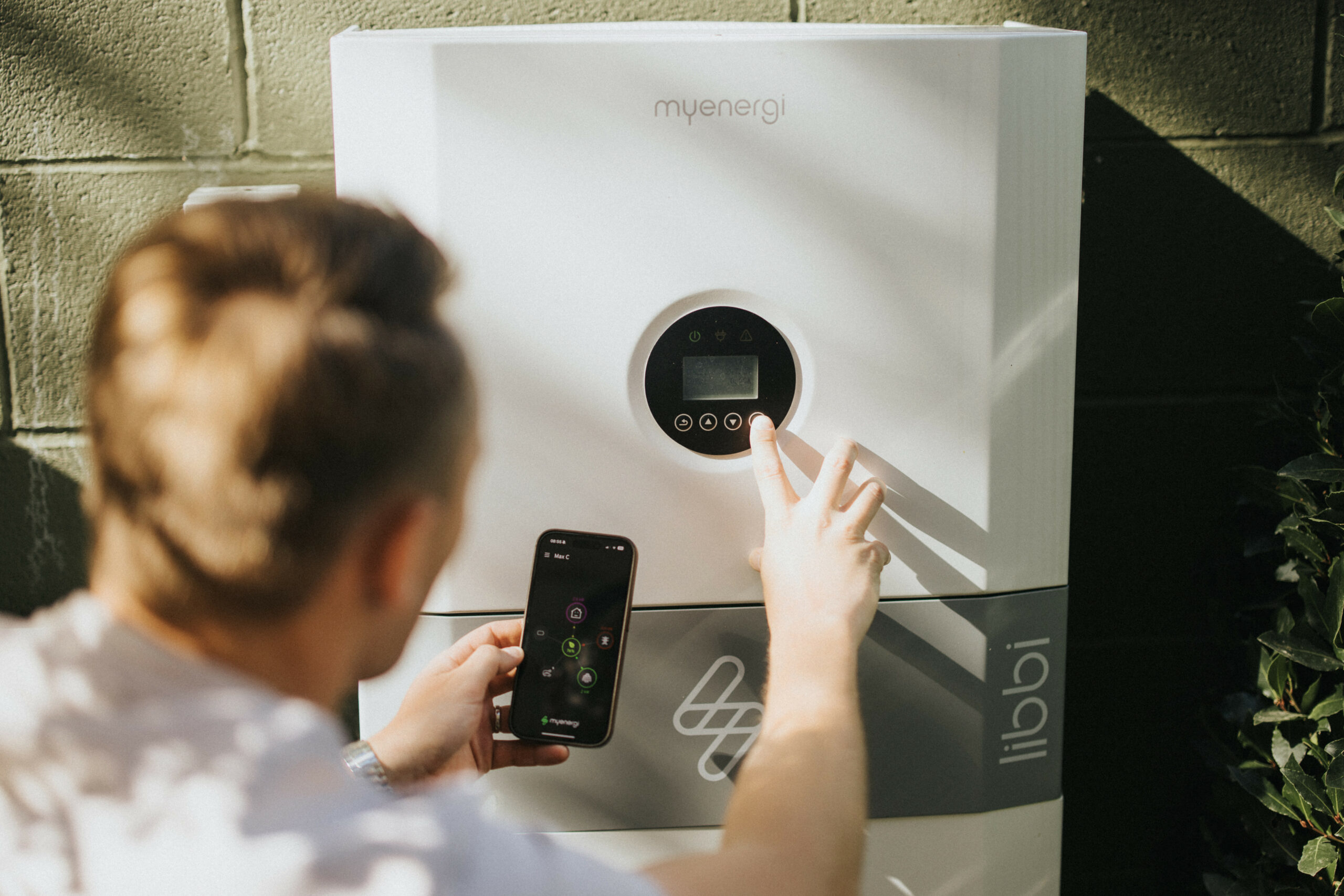In this article, Jordan Brompton, co-founder and CMO of myenergi, celebrates accelerating microgeneration installation rates and explains why energy storage is becoming an increasingly popular solution to maximise self-consumption.
Renewable energy generation technologies, such as solar PV and heat pumps, are quickly growing in popularity for residential use. While deployment has been burgeoning for some years now, according to data from the Microgeneration Certification Scheme (MCS), 2023 surpassed every previous year on record for certified installations across the UK.[1]
More than 220,500 low-carbon energy and heating technologies were commissioned, including 183,000 PV arrays and almost 37,000 air source heat pumps.[2] In addition, more than 1,800 new contractors joined the MCS, representing growth of 70% year-on-year.
It’s fair to say, therefore, that microgeneration has progressed from a nascent technology to a viable alternative to mains supply. But what are the reasons behind rising demand? Is now the right time to invest in renewables? And will self-generation prove a short-term trend, or a staple for the smart homes of tomorrow?
What’s behind the boom?
Amid rising inflation, volatile energy prices and the threat of recession, homeowners are embracing new and innovative ways to safeguard themselves against unpredictability. This, alongside the environmental benefits of self-generating energy at home, makes for an attractive proposition.
While previously considered somewhat of a niche solution, significant investment has seen efficiencies increase and availability rocket. As a result, it’s now estimated that more than 1.4 million residential properties across the UK feature solar panels alone (more than 4% of the population), with many more embracing heat pumps, domestic wind turbines, micro hydropower and solar thermal arrays.
But aren’t renewables expensive? Well, according to Which?, a typical 3.5kWp solar PV array (enough to provide power for a family of four) can now be purchased and installed for as little as £5,500. With the average annual energy bill for a three to four-bed property sitting at around £1,936 per year[3], the payback period is far shorter than many may think.
As a result, while upfront investment is required, homeowners have the potential to self-generate much of their own electricity needs and save money in the long-term by doing so.
But let’s pause for just a moment to discuss the realities. While installing renewable energy generation technology might seem like the silver bullet, it’s still important to understand the limitations. Free energy is a huge hook, but the peaks and troughs are unpredictable – generating solar energy in poor weather conditions is the perfect example. What’s more, most homeowners are out of the house during periods of high generation and use most energy during low periods.
As such, it’s not unusual to see users exporting surplus energy to the grid and buying it back (at a far more expensive rate) when they need it most. If you don’t manage your generation properly, your future-proof solution to alleviate reliance on mains supply may not deliver the benefits you were expecting.
A study from the University of Oxford reflects this thinking perfectly, identifying that average renewable energy self-consumption stands at around just 45% in the UK,[4] with some users reducing their reliance on mains energy by just 24%. A second report from UCL estimates a far lower figure (37.3%), noting the important and unpredictable impact of seasonality.[5]
Overcoming ‘lumpy’ generation
In the past, concerns over consumption was seen as a deal breaker for many households, who were keen to avoid the risk of effectively paying twice. But this doesn’t have to be the case. After all, new innovations in self-consumption technology are allowing consumers to take more control of their renewable energy than ever before.
At myenergi, we’re big believers in energy independence and maximising the consumption of self-generated energy. To do this, we’ve pioneered a next-generation range of eco-smart home energy devices that help homeowners to use 100% of energy generated in the home.
Alongside zappi, our eco-smart EV charger that allows users to power their electric car with self-generated renewable electricity, we also manufacture eddi, a clever power diverter that sends surplus energy to heating devices (such as your immersion heater, storage heater, underfloor heating, electric heater or any other electrical resistive load up to 3.68kW with a mechanical thermostat).
But when it comes to self-consumption, there’s no better solution than our libbi modular battery storage system. Providing a simple, effective way for users to capture surplus green electricity and access it immediately when they need it most, libbi uses 5.1kWh battery packs, scalable up to a total of 20.4kWh of storage, with either a 3.68kW or 5kW inverter.
Customers can choose whether to charge the libbi from solar, grid energy, or a mixture of both – with the latter being optimised around a time-of-use or agile tariff.
Providing a simple way for users to capture surplus green electricity and access it immediately when they need it most, users are seeing libbi as the antidote to ‘lumpy’ renewable energy generation. Indeed, you can effectively alleviate the peaks and troughs of renewable energy generation to maximise self-consumption and reduce reliance on mains supply – the perfect solution to optimise renewables, save money and decarbonise the home.
Are home batteries the new normal?
As battery technology continues to evolve, manufacturing economies kick-in and prices resultingly fall, home energy storage will become more and more commonplace in the smart homes of tomorrow. This will go hand-in-hand with escalating renewable energy generation installations and the introduction of an increasing variety of time-of-use energy tariffs to make a meaningful dent in traditional grid reliance and carbon reduction.
As a result, we expect the use of intelligent energy storage solutions to continue gaining popularity, eventually becoming a standard fitting for all new builds and renovations.
[1] https://mcscertified.com/2023-a-record-breaking-year-for-mcs-and-small-scale-renewables/
[2] https://www.carbonbrief.org/analysis-surge-in-heat-pumps-and-solar-drives-record-for-uk-homes-in-2023/
[3] https://www.ofgem.gov.uk/publications/changes-energy-price-cap-1-january-2024
[4] https://www.sciencedirect.com/science/article/abs/pii/S0301421518302222
[5] https://discovery.ucl.ac.uk/id/eprint/10047969/1/McKenna%20PV%20self-consumption%20in%20UK%202018%2005%2008.pdf








